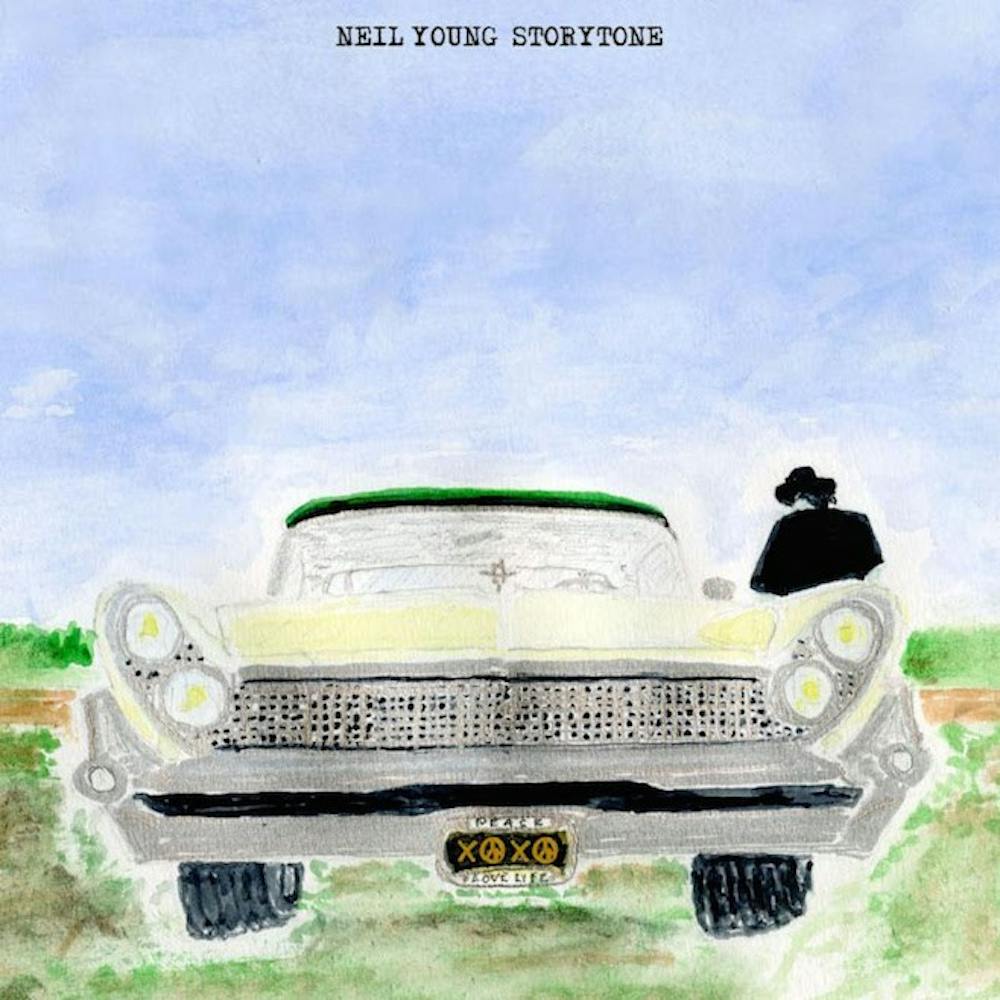Legendary Canadian singer-songwriter Neil Young released his latest album, "Storytone," Tuesday in two parts: as a standard edition featuring only orchestral cuts of the tracks and as a deluxe edition also featuring the solo versions of the album's 10 songs.
The album comes soon after Young's album of covers, "A Letter Home," which was released by Jack White's record label in April of this year. It displays a significant shift from Young's classic stylings with an over-edited orchestra backing his still poetically dissonant vocals.
These clashing sonic motifs are evident from the very start of the first track, the wistful ballad "Plastic Flowers." The song, full of trite lyrical references to Mother Nature, river banks and Young's "style," is not offensive in the ways that one might expect. His simplistic lyric style and gruff, unmelodic vocals work here just as well as they have on any of his previous released albums, but against the backdrop of the orchestra's campy violin and harp, Young's voice seems out of place and loses its unpolished poetry in the fray.
Instead of the heartbreaking sincerity that generally comes along with Young's authentic vocal style, he appears forced and contrived against the awkward orchestral sounds, robbing Young's music of all of the bare, folksy glory that fans have come to love.
"Plastic Flowers" is followed by "Who's Gonna Stand Up," a lyrically messy tribute to the environment that tries unsuccessfully to be the inspirational, revolutionary anthem that it isn't.
If found in one of Young's characteristic younger songs, I could forgive the awkwardly clichéd lyrics. However, these phrases stick out like the sore thumb that they are against the polished, movie soundtrack orchestra he chose to pair his music with. Painful highlights such as "Damn the dams, save the rivers / Starve the takers and feed the givers" and "We're the people known as Earth," fill the song with cringe-worthy moments worthy of a late-night infomercial dedicated to saving the Amazon rainforest.
The orchestra's camp, however, is in highest form on the album's forth cut, "Glimmer." The song, complete with violins reminiscent of a children's fairy tale and harp-created magic wand noises, makes the listener feel as if he or she is perpetually trapped in the walk-through of Cinderella's castle at Disneyland. This purgatory between the real world and that of fairy tale, where a muggy walkway into the world of wonder surely awaits, is the midpoint in the album. The halfway point leaves the listener asking, "Dare I continue?"
When listening to the album in whole, though, the listener will find that he or she must pass through seven tracks (the seven circles of hell, perhaps) of uncharacteristically manufactured tripe in order to get to the last three songs, which showcase Young in his songwriting prime. Beginning with "I'm Glad I Found You," which, despite an equally overwrought orchestral intro, reflects classic Young, these last three tracks ("I'm Glad I Found You," "When I Watch You Sleeping" and "All Those Dreams") are pleading, lyrical and beautiful, bringing back the masterfulness of Young's songwriting that made him a musical superstar.
After the thorough disappointment of the "Storytone" standard edition, the deluxe edition of solo-recorded versions of the 10 songs provides solace for hardcore Young fans devastated by the manufactured turn his music took. Listening to these stripped-down versions of songs like "Plastic Flowers" and "Tumbleweed," it becomes astonishingly clear that Young's songwriting should remain as it has in the past: Unaccompanied, save for his bleating vocals and simple acoustic guitar.
Despite this departure from the formula that's clearly been working for Young for the last 50 years, the "Storytone" deluxe edition gives hope that Young will straighten out and have an epiphany about his artistic direction.
Young's special brand of genius for the bare-necessities style of folk songs comes best served cold — sans orchestra, sans put-on swagger and, most importantly, sans bizarre magic wand sound effects.
Commiserate with the reporter about whatever has been up with Neil Young lately at ezentner@asu.edu or follow her on Twitter @emilymzentner.
Like The State Press on Facebook and follow @statepress on Twitter.





